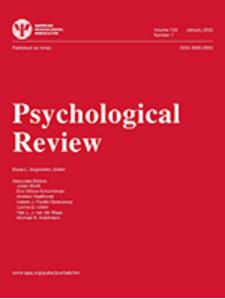Bouncing back from life's perturbations: Formalizing psychological resilience from a complex systems perspective.
IF 5.1
1区 心理学
Q1 PSYCHOLOGY
引用次数: 0
Abstract
Experiencing stressful or traumatic events can lead to a range of responses, from mild disruptions to severe and persistent mental health issues. Understanding the various trajectories of response to adversity is crucial for developing effective interventions and support systems. Researchers have identified four commonly observed response trajectories to adversity, from which the resilient is the most common one. Resilience refers to the maintenance of healthy psychological functioning despite facing adversity. However, it remains an open question how to understand and anticipate resilience, due to its dynamic and multifactorial nature. This article presents a novel formalized framework to conceptualize resilience from a complex systems perspective. We use the network theory of psychopathology, which states that mental disorders are self-sustaining endpoints of direct symptom-symptom interactions organized in a network system. The internal structure of the network determines the most likely trajectory of symptom development. We introduce the resilience quadrant, which organizes the state of symptom networks on two domains: (1) healthy versus dysfunctional and (2) stable versus unstable. The quadrant captures the four commonly observed response trajectories to adversity along those dimensions: resilient trajectories in the face of adversity, as well as persistent symptoms despite treatment interventions. Subsequently, an empirical illustration, by means of a proof-of-principle, shows how simulated observations from four different network architectures lead to the four commonly observed responses to adversity. As such, we present a novel outlook on resilience by combining existing statistical symptom network models with simulation techniques. (PsycInfo Database Record (c) 2024 APA, all rights reserved).从生活的干扰中反弹:从复杂系统的角度将心理复原力正规化。
经历压力或创伤事件会导致一系列反应,从轻微的干扰到严重和持续的心理健康问题。了解对逆境的各种反应轨迹对于制定有效的干预措施和支持系统至关重要。研究人员发现了四种常见的逆境反应轨迹,其中复原力是最常见的一种。复原力是指在面临逆境时仍能保持健康的心理功能。然而,由于抗逆力的动态性和多因素性,如何理解和预测抗逆力仍是一个悬而未决的问题。本文提出了一个新颖的形式化框架,从复杂系统的角度对复原力进行概念化。我们采用精神病理学的网络理论,该理论认为精神障碍是症状与症状之间直接相互作用的自我维持终点,并在网络系统中组织起来。网络的内部结构决定了症状最可能的发展轨迹。我们引入了 "恢复力象限"(resilience quadrant),它将症状网络的状态分为两个领域:(1) 健康与功能障碍;(2) 稳定与不稳定。该象限从这些维度捕捉了四种常见的逆境反应轨迹:面对逆境时的恢复力轨迹,以及在治疗干预后仍持续存在的症状。随后,我们通过原理验证进行了实证说明,展示了从四种不同的网络架构中模拟观察到的结果如何导致四种常见的逆境反应。因此,我们通过将现有的统计症状网络模型与模拟技术相结合,为复原力提出了一个新的视角。(PsycInfo Database Record (c) 2024 APA, all rights reserved)。
本文章由计算机程序翻译,如有差异,请以英文原文为准。
求助全文
约1分钟内获得全文
求助全文
来源期刊

Psychological review
医学-心理学
CiteScore
9.70
自引率
5.60%
发文量
97
期刊介绍:
Psychological Review publishes articles that make important theoretical contributions to any area of scientific psychology, including systematic evaluation of alternative theories.
 求助内容:
求助内容: 应助结果提醒方式:
应助结果提醒方式:


